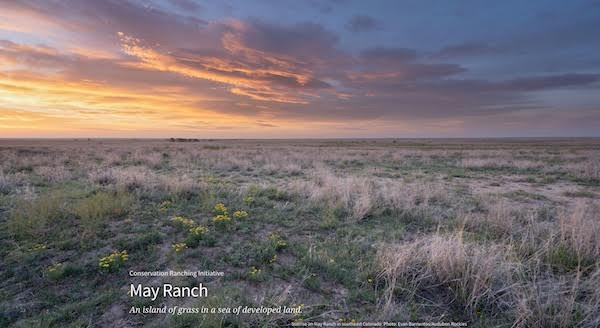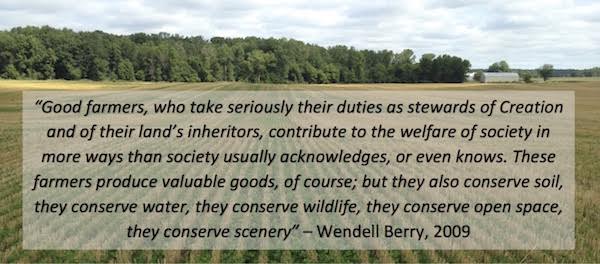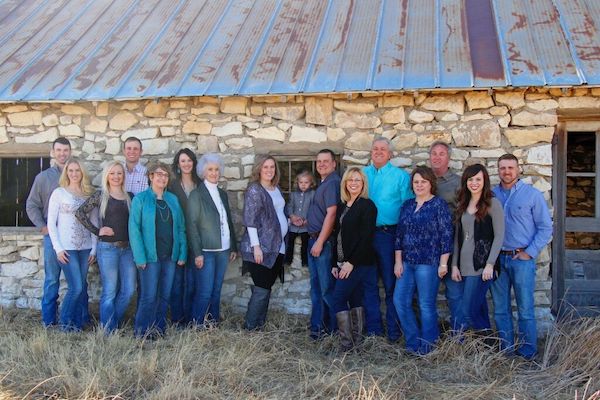Ten years ago, Dallas May and wife Brenda made a decision to go beyond their comfort zone and stretch the marketing of their cattle from their Ranch as well as to introduce new income sources that they hoped would create room for their three children along with the growing herd of grandchildren. Their efforts to change as well as modernize their approach to stewardship were recognized last year as “May Ranch” received the 2021 Leopold Award. Named after Sand County Almanac author and naturalist Aldo Leopold, the award is given to those who inspire others with their voluntary conservation efforts on private, working lands.
After more than 40 years of raising cattle, the Mays felt a change was needed in 2012 when they decided to purchase the land where they had been leasing and raising their high-quality Limousin beef. I’m told all 800 of the May’s cattle have descended from one young heifer Dallas May’s grandfather gave to him when he was 13. Some say May is running a biology lab as much as a ranch, as discoveries of over 90 plant species never documented in Prowers County, as well as the black rail and other vulnerable species like lesser prairie chickens now coexist along with reintroduced black-footed ferrets.
What started years ago as simple regenerative practices have had the profound effect of reintroducing threatened species to the marshes and ponds that break up their 15,000 acre dryland operation. After the word got out and visits were made by bird experts from Cornell University’s famed ornithology lab hoping to see the elusive black rail, opportunities beyond selling to developers started opening up. From getting the folks at Audubon to certify the ranch as bird-friendly to selling carbon sequestration credits for the tall grass, the May Ranch near Lamar, Colorado is betting big on rare birds and can now best be described as a modern mix of environmentalism, opportunism, and hustle.
These discoveries helped persuade the Audubon Society to make “May Ranch” a certified bird-friendly ranch, giving the Mays instant name recognition. It’s worth mentioning that the Mays said no to multiple leases for solar arrays and electrical windmills which ultimately helped them win a valuable conservation easement. Ducks Unlimited even paid them carbon sequestration credits for letting prairie grasses grow, and when they agreed to host reintroduction of endangered black-footed ferrets, agencies offered money to help monitor their progress, though the Mays didn’t take it.
With their name now known by the more than 18 million active American birders, their business model fell into place for the grass-fed operation. The Mays now sell their beef to some Colorado restaurants with the Audubon-certified label, and Natural foods grocers will pay more for beef certified as GAP, meaning rated by Global Animal Partnership for features like grass-fed and avoiding use of antibiotics or hormones. The Mays decided to shoot for a level 5 rating since there are no physical alterations of the cattle. In fact, the 800-odd Limousin never leave the ranch until slaughter instead of being finished at a feedlot.
Adding to their revenue streams, their conservation easement was a major boon as groups pay ranchers for easements if the owner gives up development rights and agrees to keep the land as open space, something that May could have forgone to reap income from the dozens of offers they have received from energy companies as his land happens to adjoin a power substation. To make sure that never happened, The Conservation Fund, backed by the Nature Conservancy and others was willing to pay.
Interestingly, a decade ago, the marriage between conservation and the ranching community was a tough conversation to have. But now for those willing to make the change opportunities abound. May is quick to point out that the new opportunities come with new procedures as seeking the sanction of outsiders is now a necessary part of environmental ranching. But for those willing to hold themselves to the highest standard possible opportunities certainly exist if you’re willing to adjust. As public lands no longer attract the biodiversity they once did, mostly due to excessive use, the future looks great for private landholders looking for new opportunities. (Source: coloradosun.com, rockies.audubon.org)










